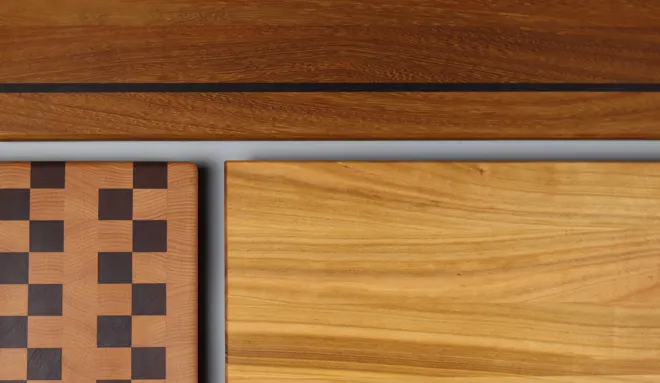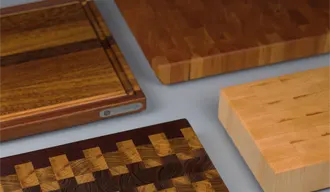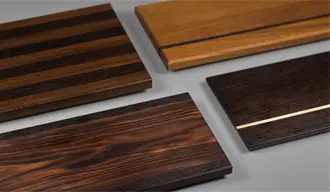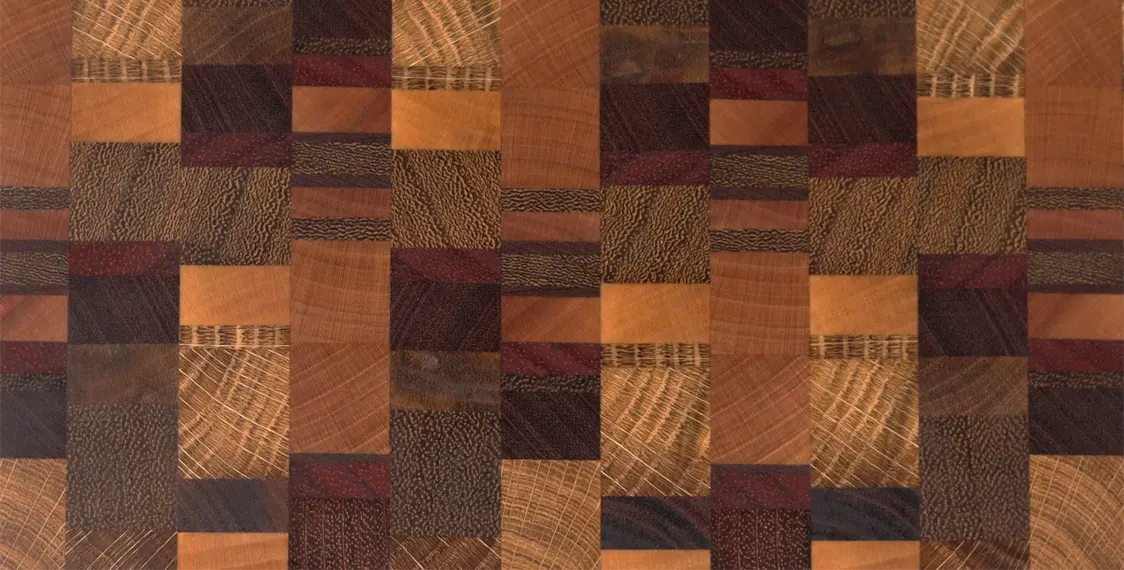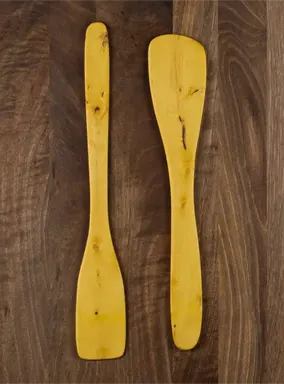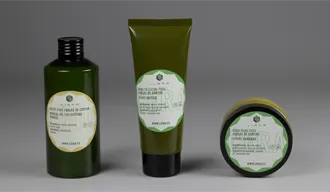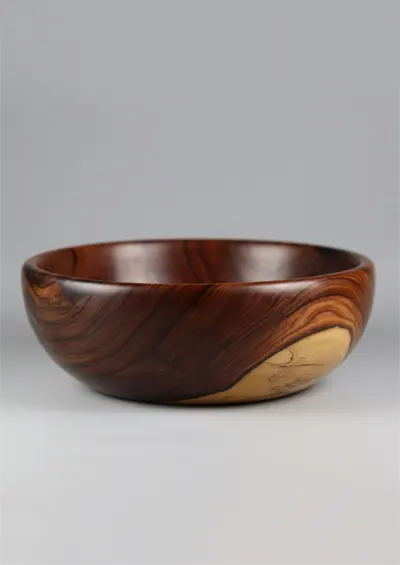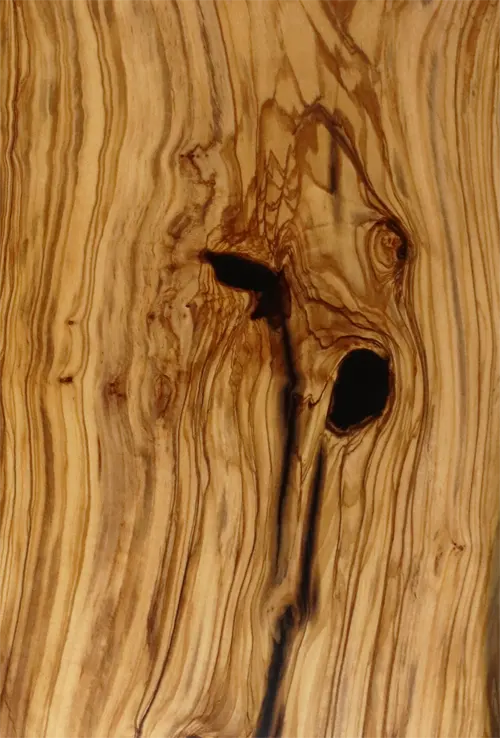Restaurant serving boards: a complete guide
In the world of gastronomy, presentation is everything. Restaurant serving board are an increasingly popular resource for enhancing dishes, becoming the perfect canvas for serving gourmet dishes, cold cuts, cheeses, charcuterie, freshly baked bread, or delicious appetizers.
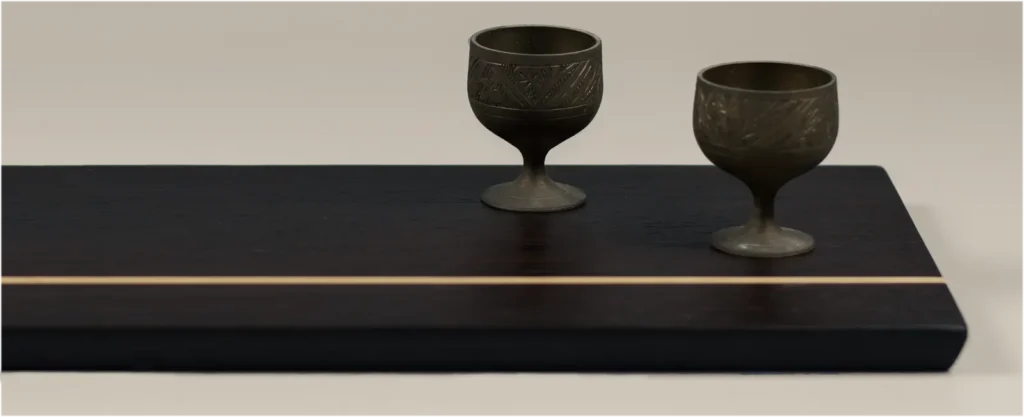
These serving boards not only provide warmth and authenticity, but also help differentiate your culinary offering from the competition.
Hardwoods: the key to quality restaurant presentation boards
Choosing durable and resistant woods
Not all woods are created equal. For serving boards in professional settings, it’s best to choose varieties with high density and durability, capable of withstanding intensive daily use in the kitchen and dining room.
Softwoods, for example, are easily marked by knives, forks, or other utensils, quickly losing their attractiveness.
On the other hand, fine woods such as wenge, walnut, or iroko offer greater density and hardness, ensuring a surface that is more resistant to knocks and scratches.
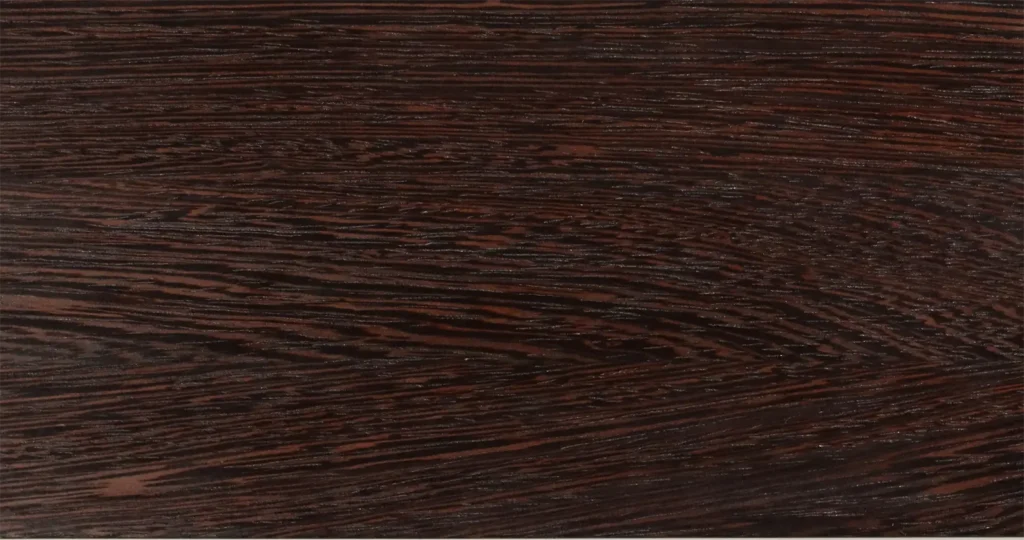
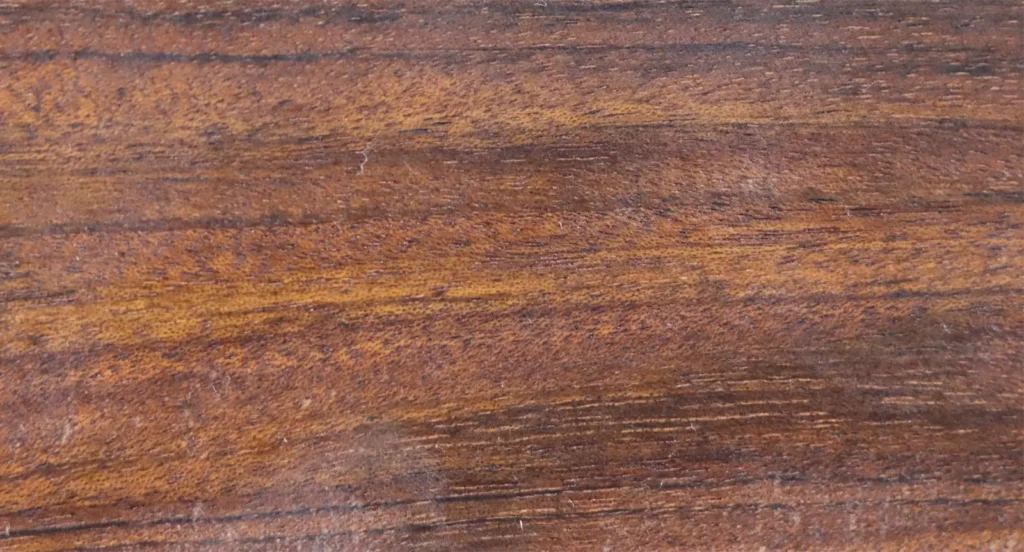
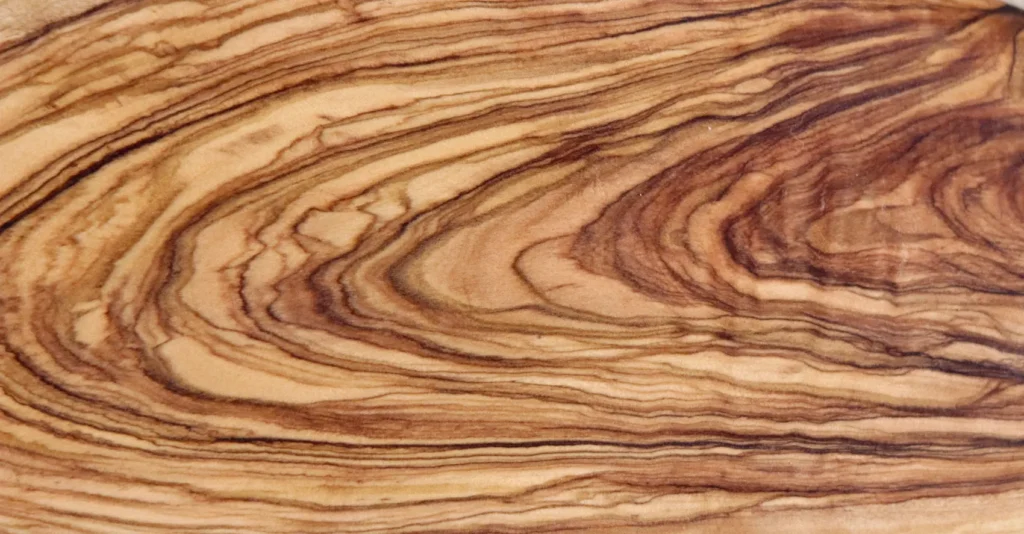
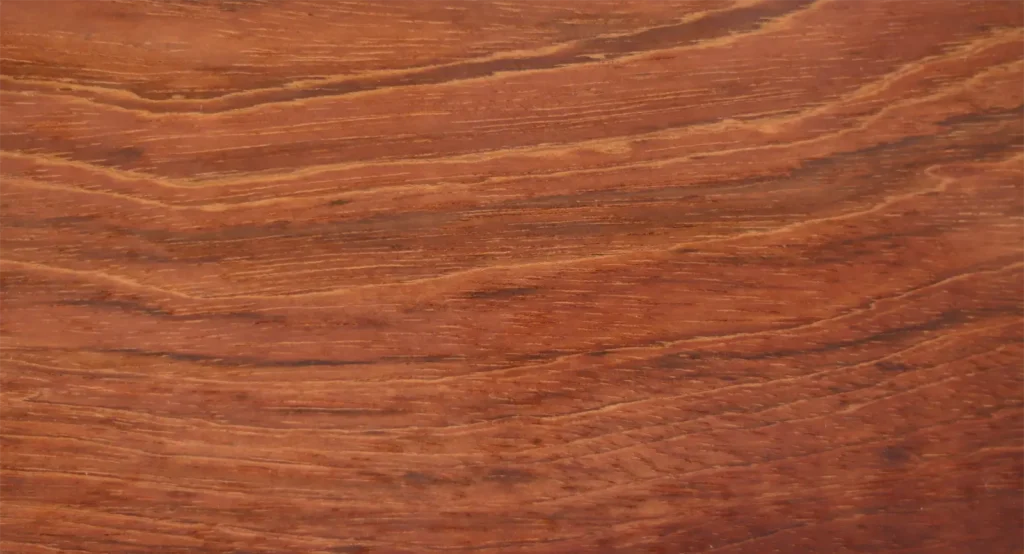
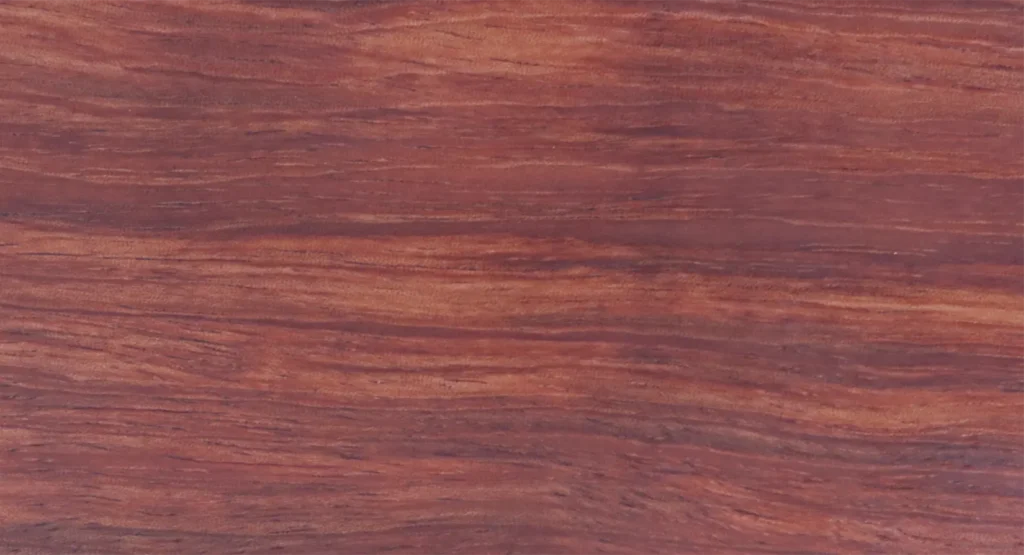
Moisture-proof finishes
Unlike conventional cutting boards used at home, restaurant serving boards require specific finishes that make them more resistant to moisture and daily wear and tear.
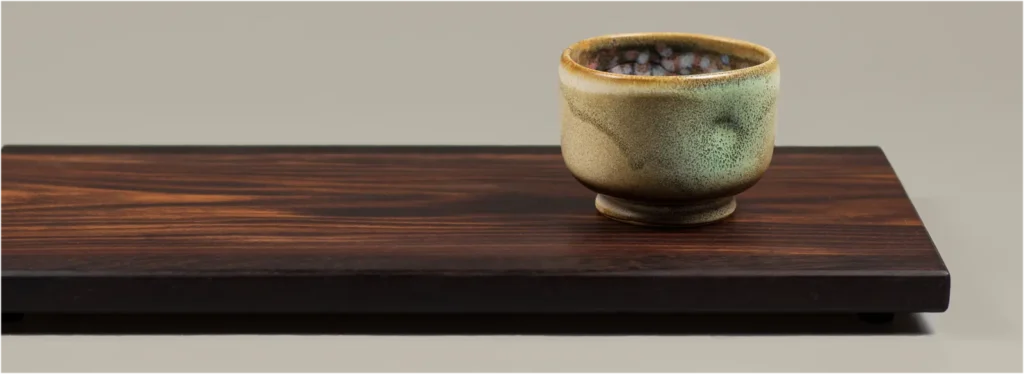
A good treatment with mineral oils or edible waxes helps keep the surface protected against liquid absorption, thus preserving its impeccable appearance for longer.
What should you consider when choosing your restaurant tables?
Type of wood
- Tropical woods: Exotic woods like wenge and iroko are perfect for charcuterie boards thanks to their superior resistance to moisture and stains. They also offer a sophisticated presentation.
- Walnut: Considered a premium wood, it stands out for its elegant dark color and its remarkable resistance to wear and tear. Ideal to give a sophisticated touch to your presentations.
- Olive: With distinctive veins and a firm texture, olive brings a Mediterranean flair, combining beauty, durability and moisture resistance.
2. Food grade finishes
Make sure service boards are treated with food-grade oils or waxes. These finishes seal the surface, preventing the absorption of liquids and preventing bacteria from settling in the wood. They also make cleaning easier and extend the life of your boards.
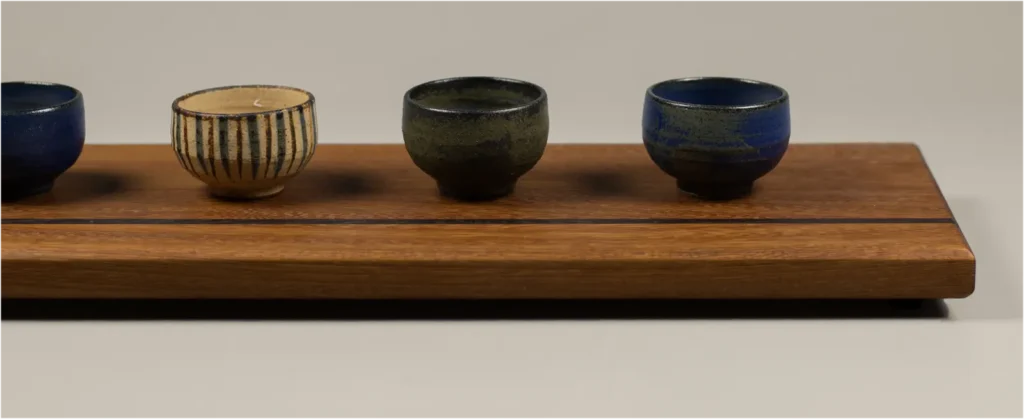
Maintenance and care
Even if you’ve chosen hardwoods, daily care is essential to maintain their good condition. Wipe the boards with a damp cloth after each use and dry them thoroughly.
A periodic application of edible mineral oil helps preserve the finish and moisture resistance.
Restaurant tables: an investment that makes the difference
Investing in high-quality restaurant serving boards made from fine wood guarantees an impeccable and professional presentation of your dishes.
These surfaces enhance the perceived value of your food offering, giving your customers a much more complete visual and sensory experience.
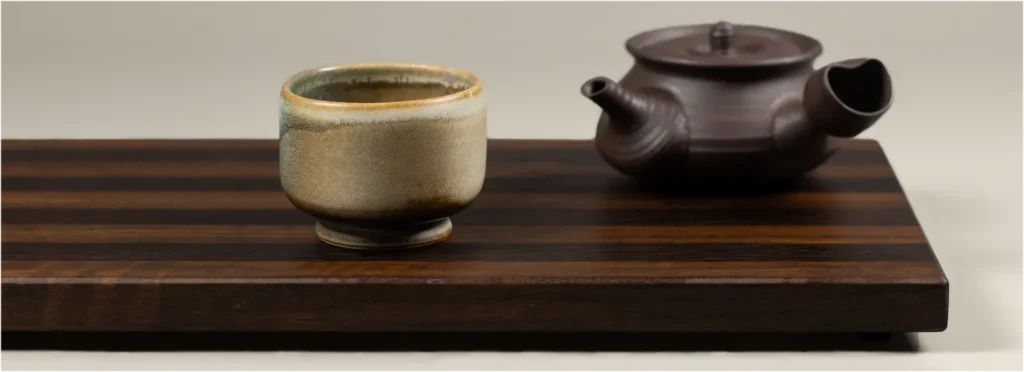
Plus, their long lifespan and easy maintenance make them a smart investment that, in the long run, will generate greater satisfaction and loyalty among your guests.
Write to us for a personalized quote on our serving boards, or submit your idea and we’ll design your custom serving board line.
Conclusion:
Choosing the best woods and finishes for your serving boards or charcuterie boards will not only positively impact the appearance of your dishes, but will also ensure their durability and functionality in the restaurant’s day-to-day operations.
By taking care of these details, you can offer a unique gastronomic experience worthy of the most demanding palates.
Frequently Asked Questions
What types of presentation boards are ideal for restaurants?
Hardwood boards, such as wenge, walnut, or iroko, offer a warm and sophisticated aesthetic, ideal for presenting cured meats, cheeses, and appetizers. Slate or melamine options are also available, providing modern styles and are easy to clean.
How to choose the best cutting board for a professional kitchen?
In the hospitality industry, it’s advisable to opt for high-density polyethylene boards, as they are durable, hygienic, and dishwasher-safe. Wooden cutting boards can also be used to safely cut cooked food, especially if it needs to be cut in front of a customer.
What maintenance do wooden boards require in the hospitality industry?
Wooden boards should be cleaned with warm soapy water, dried completely, and periodically coated with food-grade mineral oil to preserve their finish and resist moisture.
Can presentation boards also be used as cutting boards?
Not recommended. Serving boards are designed for serving food and often have finishes that can be damaged by knives. It’s best to use specific cutting boards and reserve the presentation boards for plating.
Where can I buy quality presentation and cutting boards for the hospitality industry?
There are specialized suppliers of catering equipment that offer a wide range of boards tailored to different styles and needs. It’s advisable to look for companies with experience in the sector and good references.
Which woods are best suited for restaurant serving boards?
Hardwoods such as walnut, oak, cherry, and maple are ideal for serving boards due to their durability, moisture resistance, and attractive aesthetics. These woods offer a sturdy and elegant surface that enhances the presentation of dishes.
How should a wooden board be cleaned and maintained in a professional environment?
It’s recommended to hand-wash the board with warm water and mild soap, dry it completely after each use, and periodically apply food-safe mineral oil to keep the wood moist and prevent cracking. Avoid submerging it in water or putting it in the dishwasher, as excessive moisture can deteriorate the wood.
Are wooden boards safe for food contact?
Yes, wooden boards are safe for food contact, especially if they’re treated with food-safe oils or waxes. Additionally, certain woods have natural antibacterial properties that inhibit the growth of bacteria on their surfaces.
What advantages do wooden boards offer over boards made of other materials?
Wooden boards offer several advantages: they are gentler on knives, helping them maintain their sharpness; they have natural antibacterial properties; and their warm, natural appearance enhances the presentation of dishes. Plus, with proper care, they can last for many years.
Is it possible to customize the wooden boards to fit the restaurant’s aesthetic?
Yes, at Ligna we offer customization services that include the choice of wood, size, shape, and the option to engrave logos or specific designs. This allows the boards to integrate seamlessly with the restaurant’s visual identity.
Otras entradas del blog
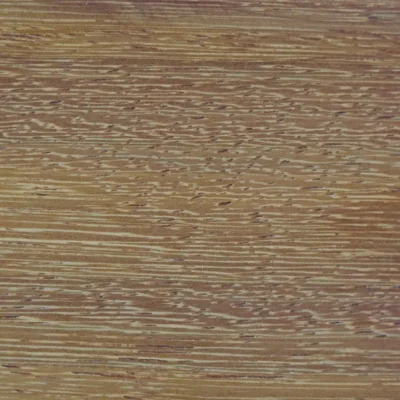
Top 10 Moisture-Resistant Woods
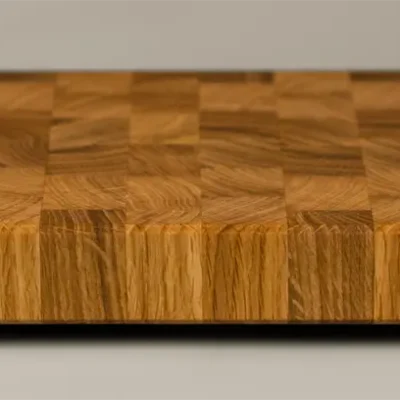
Good Wood for Cutting Boards

Black Wood: Species and Uses
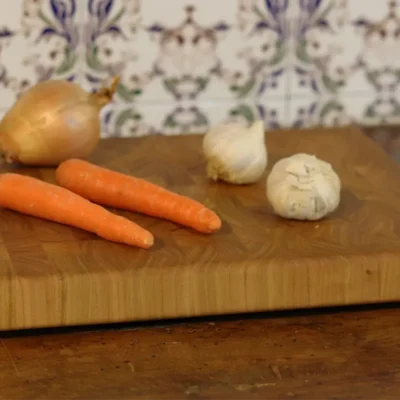
What size of wooden cutting board to choose?
Nuestras tablas de cortar:
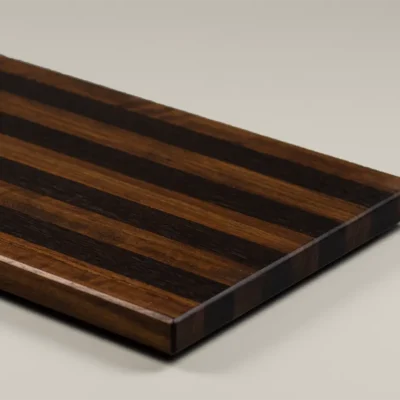
UMBRA
serving board
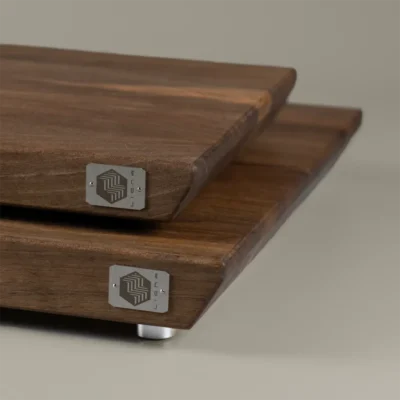
Linea
Walnut Walnut cutting board
Linea
WalnutWalnut cutting board
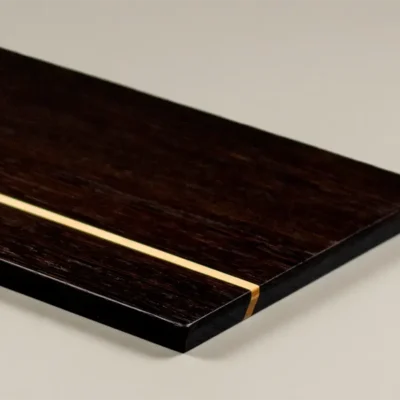
NIGRA
serving board
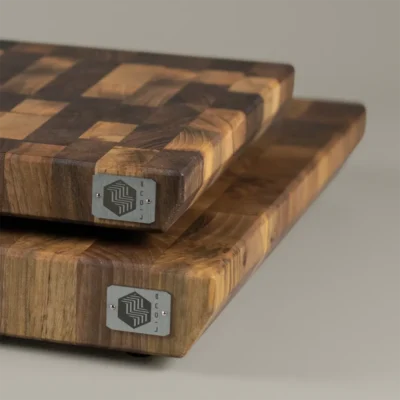
Pura
Walnut walnut butcher block
(copia)
Pura
Walnutwalnut butcher block
